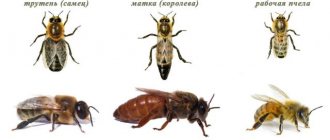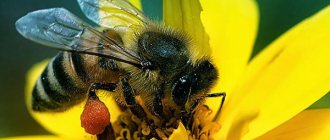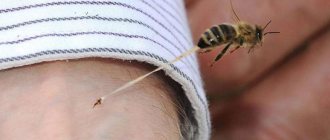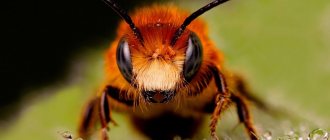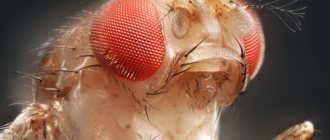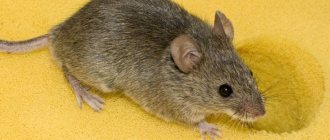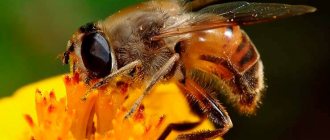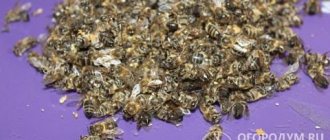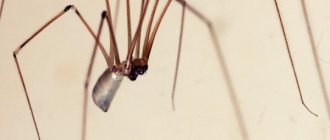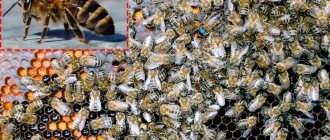Beekeeping is an interesting and specific industry that differs from other types of agricultural work. Each beekeeper has his own developed beekeeper calendar, which details his mandatory functions during the beekeeping period, the period of intra-club brood rearing, etc. Below are the beekeeping basics for each month.
January
The winter period is the most favorable for the beekeeper to draw up a work schedule for the coming year. The wintering of bees requires careful monitoring. It is important to monitor the temperature and humidity of the hive daily. The optimal indicators are those at which the insects calm down and remain in this state for a long time.
The quality of bees' wintering is determined using a rubber tube. One end is directed into the notch, and the other is applied to the ear. The hum of insects should be uniform and calm. This is how bees are examined in winter.
Beekeeping is organized: tools and equipment are prepared, lids and bottoms are repaired, and the required number of frames is prepared. To plan work for the year, you can use special thematic smartphone applications. You can view a ready-made breeding calendar on the Internet.
Natural hatching of the queen bee
At a certain point, the family, succumbing to instinct, reproduces and lays queen cells for further breeding of queens. The bowls are laid by insects during the swarming period, in which the queens lay eggs, from which new queens subsequently develop.
During swarming, the beekeeper receives well-developed and healthy young queens without any special costs. The disadvantages of natural inference include the impossibility of planning and spontaneity. Because of this, it is not possible to form layering . Moreover, due to the use of swarming queens alone, high swarming is observed, which is undesirable for the beekeeper.
February
The month of February is characterized by frequent temperature changes. It shouldn't go up/down too much. Caring for bees in winter is especially important. For ventilation, you need to bring pre-prepared frozen 20-50 five-liter plastic bottles into the room with the hive and place them on the floor.
Ice will attract heat if spring starts early. Every week in February you need to check the condition of the insects inside the hive.
Calendar of folk signs
The behavior of insects is closely related to the weather. Observing the influence of weather conditions on the life of bees, people have accumulated many folk superstitions.
Winter
1st of January. New Year. Look at the roofs - if there is snow hanging from them, the swarming will be strong.
January 18. Epiphany Christmas Eve. If the branches bend under the weight of the snow, swarming will be successful.
January 19. Baptism. Epiphany of the Lord. A strong whirlwind leads to active swarming. If it snows while entering the water, swarming will also be good.
1st of February. Day of Macarius - the weather guide. The bees have flown out of the hive - don’t expect warmth quickly. If there is a buzz in the hive or snow is falling in flakes, there will be significant swarming.
Spring
March 1. Maremyana-Kikimora Day. Early departure – early spring.
April 28. If the loss of bees is small, wait for the buckwheat harvest.
1st of May. Kozma's Day. Bees are angry - bad weather.
Summer
June 1st. Bees are feisty and often sting – this means drought. Loud buzzing - the weather will change, it will rain today or tomorrow. Bees near the hive mean bad weather, far in the fields means good weather. Lazy and late with work - hope the weather is good.
7 July. Day of John the Baptist. If it rains, there will be honey on August 14 (the first Savior).
Autumn
September 1. Day of Andrew Stratelates. The bees are closing the cracks and entrances - the winter will be harsh. The sooner the drones are driven out, the sooner winter will come.
October 14. Cover. On this day the Most Pure One covers the hives with snow.
Beekeeping is an activity that requires hard work, discipline and consistent implementation of all necessary activities. Thanks to a clearly drawn up calendar, beekeepers carry out the entire range of bee breeding work in a timely manner.
0
0
Copy link
March
The beekeeper's calendar for March includes a lot of work. A person must carefully monitor insects, because with the onset of spring they react to climate changes. The expected time frame for the development of families is being thought through.
In early spring, insects are listened to for the last time, and the results of wintering are summed up. It is noted how many colonies have died, and it is predicted how well the bees will survive the next winter. The expected stages of development of the bee colony are determined.
Snow must be removed to prevent accumulation and absorption of moisture. Rotten stakes and covers are replaced with new ones. A plan is being implemented to expand the hive by frames.
Raising a queen bee
The queen is raised where the larvae are selected. The frame is placed in the place of the one that was removed before. There will be a cluster of worker bees who constantly monitor order, the timely delivery of royal jelly and the alignment of queen cells.
Thus, the family turns into educators. Before the appearance of the uterus, the queen cell is cut out and placed in a nucleus or cells. In this way, the individual is raised without transferring the larvae.
You may also be
April
In the apiary, the beekeeper prepares places for the future placement of hives. Dry branches of trees and bushes are removed or trimmed. In April, attempts are made to identify disadvantaged weak families.
Those in need are provided with the necessary amount of honey, nests are reduced, insulated, bee colonies are moved from dirty hives to clean ones, dead insects are cleared from the nest and buried in the ground. It is important that the process of breeding queen bees in the future occurs only with healthy individuals.
Anti-mite treatment ends. The part of the family consisting of drones is developing, which is what all the work in this cycle focuses on: special honeycombs prepared in the fall are installed. The goal is to obtain the required amount of drone brood.
How to remove drones?
Drones are removed within the first few days after the hive is exposed from the wintering grounds, since puberty in bees occurs in about a month. To breed drones, select one of the best bee colonies in the apiary.
Narrow the nest in such a colony, leaving the hives busy with breeding in a frame. In this regard, the queen will not be able to fully lay eggs. Next, place the drone comb in the center of the nest.
Interesting fact ! Bees have been producing honey for over 150 million years.
When the insulator is in the center of the nest, place the drone comb with the queen in it. After 4 days, the queen will lay eggs, you move the insulator to the family’s nest and install a new comb . Every day, feed the colony in which the drones are hatching with honey or sugar syrup .
May
Beekeepers create conditions for breeding queens. A schedule is drawn up according to which the emergence of the queen should be accompanied by the activity of the required number of sexually mature drones ready for insemination. Grafting of larvae begins.
The period of development of the uterus takes 16 days. These stages of family development are characterized by the most active secretion of wax. If you don't take advantage of the moment, the wax plates will be wasted. Bee colonies become stronger over time, so expanding the space is necessary.
The number of queens is reduced to 60% of the total number of insects that survived the winter. The main goal of the beekeeper is to regroup the worker bees into honey bees. Then a large amount of honey is provided. When insemination begins, the development of the queen bee, the beekeeper evaluates the quality of each one and uses a marker to mark the queens. We must not forget about the need to melt the wax so that moths do not spoil it, which will lead to significant losses.
Combined withdrawal method
This path includes elements of both artificial and natural (swarm-type families are used). The founder of this method, Doolittle, argued that only if optimal conditions are created for the swarming state of bee colonies or the queen is expelled, excellent quality of queens can be achieved. This option involves breeding the queens without orphaning them.
The method is gaining increasing popularity. Application options for the combined method are given below.
- Selection of high-quality breeding bee colonies and their artificial reduction to a swarm state with the aim of subsequently obtaining swarm queens. It is used in cases where it is necessary to obtain a significant number of queens. The method is close to natural.
- Reproduction of queens according to the swarm type with the movement of bee larvae. In this case, a fairly strong bee colony is taken (weighing 4-6 kg). The colony is partitioned with a Hahnemann grid in order to limit the laying of eggs in the lower body of the hive. It is necessary to constantly place frames with inoculated breeding bee larvae in the top one. The resulting queens are of high quality, which is equivalent to swarm ones. However, the number of larvae accepted is relatively small. To increase the number of queens, you can additionally use a host colony capable of receiving larvae . After this, the larvae can be transferred to a nurse colony, whose queen is isolated in a housing below.
Combined method of breeding queens
June
June's work is aimed at controlling the volume of the nest: the development of the queen bee should occur in conditions of free space for laying eggs. Layers that should participate in honey collection need to be strengthened with brood. The bee family gives up nurses, which means the queen bee of the family gets the opportunity to increase the rate of egg laying.
Where honey collection is best and fastest and there is a lot of honey, it is worth leaving sealed frames for the wintering period. Practice proves that this honey is the best for this time of year. The development of the queen bee is subject to strict control: identification of weak and strong.
July
During this period of work, it is especially important for the beekeeper to ensure that there is enough space for storing nectar. If necessary, it should be expanded. The wax glands of insects work most efficiently, so it is important to provide approximately 2 frames of wax with each pumping (in some cases you can give 1). Then wax loss will be eliminated, and young bees will not be engaged in large construction projects instead of collecting honey.
Mature honey is pumped out. This will prevent it from fermenting and souring. Half of the frame should always remain filled. The summer is being closely monitored. In case of good honey collection, swarming bees begin to hum evenly, muffled throughout the day.
Development cycle
During the first two days, the egg exists in the womb. Then it is deposited in a specially prepared cell. When the third day arrives, the larva emerges. From this moment on, the bees feed her abundantly with royal jelly. When fistulous queens are formed, the larvae are fed the same food as ordinary worker bees.
This happens until 7 days inclusive. After this, it is closed in a bowl - a cell where it will develop further. From 9 to 12 days the larva matures before entering the pupal stage. The pupa exists from 13 to 16 days. On the 17th day the uterus emerges, but at this moment it is not yet fertile.
The queen bee that was born first destroys the rest. Within 4 days after release, it matures and becomes fertile.
For the fifth day, she flies around her home outside. This is necessary to remember its location. On the seventh day, she is already able to mate with drones. On the tenth day, the first sowing usually occurs.
August
In August, honey ready for sale is pumped out. It is important to do this on time so that the weight gain does not begin to decrease and the thieving bees do not become more active. The end of the honey collection should be accompanied by the removal of the extension so that the final pumping of honey coincides with a decrease in the area of the hives.
Treatment against varroa is carried out so that the mite does not get into the brood and begin to multiply there. The bees will then start the winter in good, healthy condition, which will help them survive the colder months. The number of queen bees is becoming ever smaller, so it will not be possible to compensate for the number of sick colonies.
Beekeepers carry out an audit: they count how many bee families are left, what their condition is, what are the results of the development of the queen bee (healthy or weak queen bee). Defective honeycombs are reheated. Beekeepers are starting to sell honey at fairs.
Important nuances
The hatching of queen bees plays an important role in the development of bees and maintaining the apiary , because the main function of the queen is laying eggs. A beekeeper must be able to correctly organize the output; this is a key skill for him.
In what cases do worker bees breed new queens?
- when the old queen was taken away or she died;
- when preparations for swarming ;
- with a quiet change of the uterus.
On a note ! In this regard, there are different methods of withdrawal - natural, artificial and combined. But first things first.
How to remove a queen bee?
September
The quality (degree of crystallization) of the collected honey is assessed. Unnecessary frames and defective honeycombs are eliminated. More than half of the frame should be filled with honey. Then these reserves will last throughout the winter and families will not die. The preparation of frames for the honeycombs begins. This is a long process: first they are sorted, then cleaned and packaged.
December
The beekeeper's calendar for December is sparse. During this period, it is best to try to analyze your work:
- identify what beekeeping mistakes were made during the season;
- what should be done to prevent them in the future;
- what are the expected timing of development of bee colonies in the coming year.
Caring for bees in winter is essential. It is worth listening to the hum of the hive in order to immediately pinpoint the causes of bee anxiety. Based on the experience gained, it is worth creating your own breeding calendar based on personal observations.
Bees are special: despite human use and attempts to subjugate and exploit these insects, they remain wild. The results of beekeeping activities depend solely on the skills and abilities of the beekeeper to do his job correctly and competently. The above diagram for the months of the year is approximate in the distribution of work for one season. Experienced beekeepers can deviate from this schedule, adhering to their methods developed over many years.
Basic Rules
Before moving directly to the practice of breeding, the beekeeper needs to acquire a theoretical basis: how the queen differs from other bees, as well as what kind of family the future queen bee needs, and how it should be prepared.
In order for the process of breeding queen bees to bring results, the following rules must be followed:
- only healthy individuals with high productivity should participate in the process of breeding queens;
- for breeding, it is necessary to observe optimal conditions - maintain humidity and temperature at the proper level;
- start the process of breeding new queen bees only if there are sealed drone broods (otherwise both queens and drones will appear at the same time);
- Follow the schedule prescribed for each withdrawal method.
How to distinguish the uterus?
The queen has a number of visual features that distinguish her from drones.
It is quite simple to distinguish the queen from other bees; you just need to carefully examine the hive and pay attention to the following signs:
- The queen bee is always larger than other bees. Her body is wider and longer than that of other, still young queens, drones or worker bees.
- The queen bee's belly has a pointed end that protrudes backwards.
- Bees have a kind of barb on their stinger that can be seen with a magnifying glass. The queen bee has a smooth and straight sting.
- The queen bee's legs are located almost perpendicular to the body, spread out. In some bees, the legs are generally directed forward and backward, and not to the sides.
- The rest of the bees treat the queen with a kind of respect: they cluster around her or make way for her when she goes somewhere.
Family choice
The breeding of queen bees begins with the selection of parent families, because all future offspring that they give depend on the traits characteristic of this particular queen and drones.
In addition, future queens are responsible for the productivity and strength of the families they will lead. Thus, it is necessary to choose only among the strongest, most resilient and healthy.
The following list of requirements is presented to the family:
- maximum honey productivity is a critical requirement for the beekeeper;
- the family must be strong and resilient throughout the year, especially in the winter;
- family health and disease resistance are the key criterion for the viability of the future uterus and all the offspring that it will give.
If the apiary is owned by a person who is extremely responsible and conscientious about beekeeping, then all this data about the families can be found out from the accounting journal.
Family preparation
Preparations for withdrawal should begin no later than a year before the expected date. At the same time, you can improve the health of selected families by providing them with all the resources necessary for wintering and carrying out health measures.
List of preparatory activities:
- Check the quality of the honey produced. If it critically does not meet the requirements, it is better to opt for another family.
- It is strongly recommended to clean and disinfect the hives, thereby preventing nosematosis.
- Give stimulating feeding. In addition, bees must be provided with non-crystallizing food on an ongoing basis.
If the breeding of queen bees is planned in the spring season, then the actual procedure should be carried out only after the overwintered bees have been completely replaced by young, newly born ones. As a rule, this process will be completely completed in the second third of May.
In cases where the beekeeper needs to start the process earlier, it is also necessary to carry out a set of measures:
- bees need to be fed with carbohydrate and protein supplements;
- make the living of insects comfortable, in particular, insulate and protect the hive from the wind;
- You will need to remove the hive from the winter hut a little earlier than usual.
The formation of colonies that will raise future queen bees should begin immediately after the replacement of old bees with new ones. Such a raising family should consist of at least 2 kilograms of individuals, 4 frames of beebread and 10 kilograms of honey.
